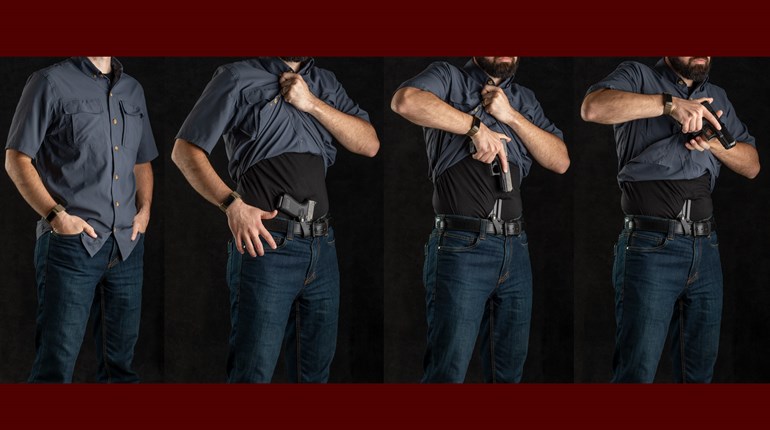
Any time that we are placed in fear of losing our lives or suffering serious injury, that computer that we call a brain kicks in and automatically performs certain physical functions. Some call it the fight-or-flight response, because our body makes itself ready to do battle or run for it.
We cannot completely stop our body from preparing for bad things, but we can recognize it and learn ways to minimize the effect or work around it. Defensive trainers have long known about these involuntary body functions and, in many cases, have developed ways for us to operate in spite of them. There are a number of things that happen to our body when we are frightened, but let’s look at four things that immediately affect our ability to fight.
The first of these fight-or-flight responses is our natural tendency to focus our vision on the perceived threat. Some call it tunnel vision because we are tempted to lock our vision on the threat so hard that we are often unaware of other things going on around us. For the armed citizen, this means that we will often fail to see other bad guys who might be approaching us from a different angle or not be aware of the police when they arrive on the scene; neither scenario is particularly appealing for a host of reasons.
This is the reason defensive students are taught to scan the area around them after firing on a threat. Now, it is a mistake to fire a couple of shots at the bad guy and then turn your head, meaninglessly, from side to side. We stay focused on the threat until we can believe that he or she is no longer an immediate threat. Then we look—and I mean actually look—at the area around us for any other threat. Our firearm is at the ready position and we are prepared to immediately resume fighting, should that be required.
When we are alarmed to the point of being concerned for our safety during the fight-or-flight response, our eardrums also tighten up, making it difficult to hear sounds that would ordinarily be easily picked up. Thus, we have learned that, when working with a partner, we need to relay commands and information in a loud voice. This also is important when dealing with untrained family members who are also experiencing the fight-or-flight response. We speak up, loud and clear, when telling them to take cover.
Our heart rate will generally increase when we are experiencing extreme stress. But, it is sending blood to our outer extremities to help deal with injuries instead of ensuring a needed flow to the brain. With folks who are out of shape, this can even be extreme enough to cause a heart attack or stroke. At the same time, under these conditions, we often find ourselves breathing very shallowly. We overcome this phenomenon by consciously forcing ourselves to breathe deeply.
Finally, in fight-or-flight moments of high stress we are likely to lose our fine motor skills. Suddenly, things that have been easy to do with our fingers are no longer possible, or at least become extremely difficult. Obviously, when operating a firearm, we cannot completely exclude the use of fine motor skills. But, we try to find other ways to perform the same function during the fight-or-flight response. For example, instead of using our fingers, we use our whole hand whenever possible.
This is the reason that many instructors teach students to use their whole hand, on top of the slide, when chambering a round. The so-called “slingshot” method, using the thumb and index finger of the support hand is just not positive enough under extreme stress.
It is also the reason that sending the slide home by using the thumb to press the slide stop is a bad idea. It is a much more positive function to use the whole hand on the top of the slide, snapping the slide to the rear, and allowing it to go into battery. The smart defensive shooter will study his or her shooting technique and avoid the use of fine motor skills, in practice, whenever possible. In practice and training, we can overcome the fight-or-flight response and form the habit of running our guns with a minimum of fine motor skills.
A person who has never experienced a deadly encounter has very little idea of the amount of stress that the fight-or-flight puts on the body. Competition puts a bit of stress on us, but gunfights pile on a lot. There is, in fact, a huge adrenaline dump that occurs. Professional training helps because it gives a person an idea of what to expect and, more importantly, what to do about it. Staying physically fit also helps because it tends to minimize the adrenaline dump and keeps that stressful overload to a minimum.
The wise defensive shooter will realize that being in a life-threatening encounter will cause his or her body to react. He or she trains, practices and studies in order to learn to deal with these natural reactions and to lessen their effect on performance. None of us are immune to the physical reactions of the fight-or-flight response, but we can develop the mind set and defensive techniques that allow us to deal with it and still overcome the threat.






































